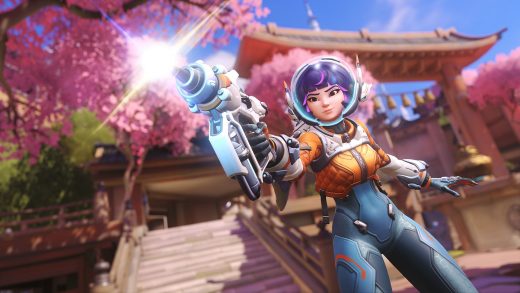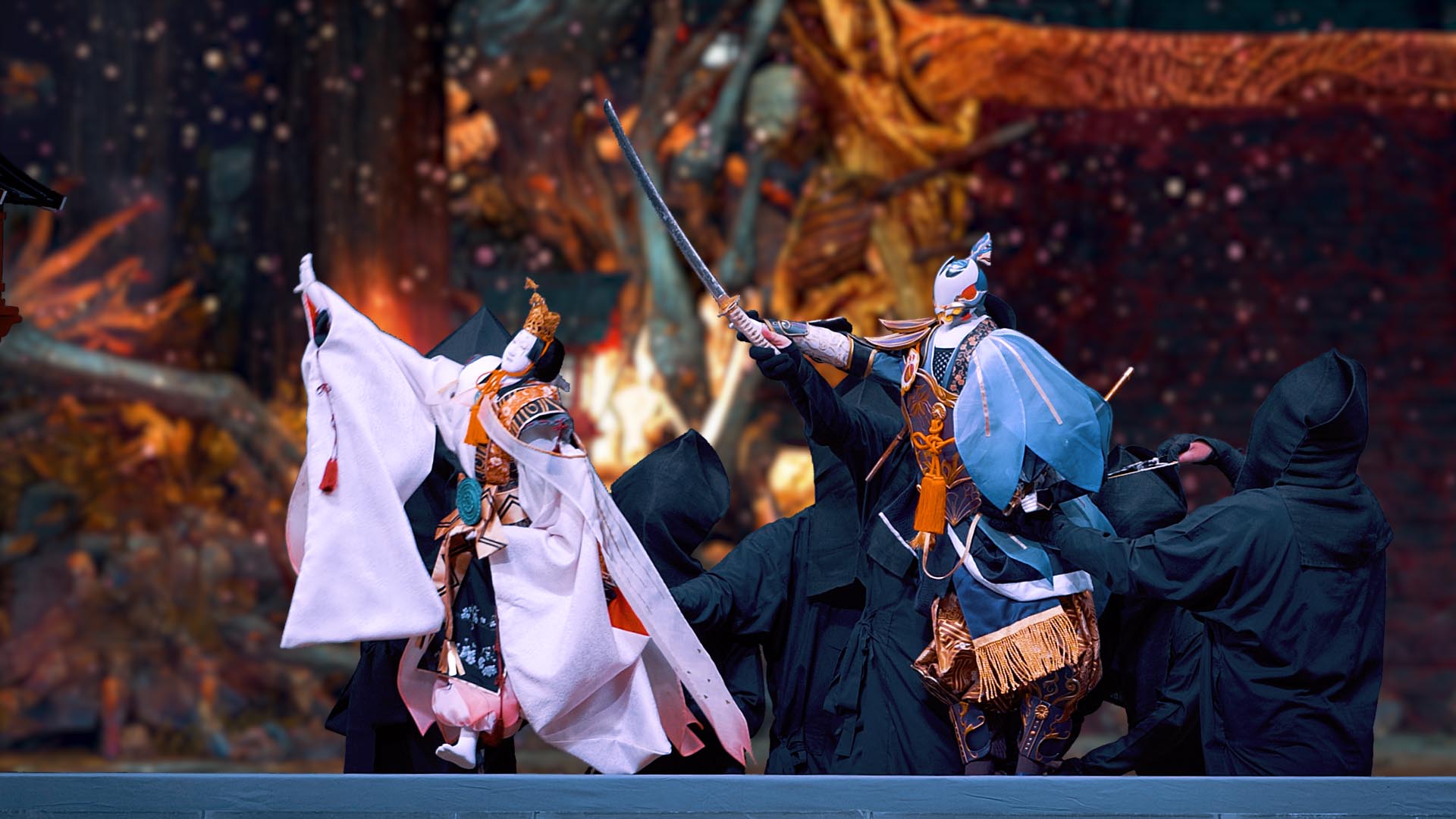
The lush Mt. Kafuku, home of the Goddess.
The source of turmoil, the defilement.
The defilement corrupts the mountain, and the 12 masks containing the power of the Goddess are stolen.
The Maiden Yoshiro & her guardian Soh purge the defilement and perform a ritual.
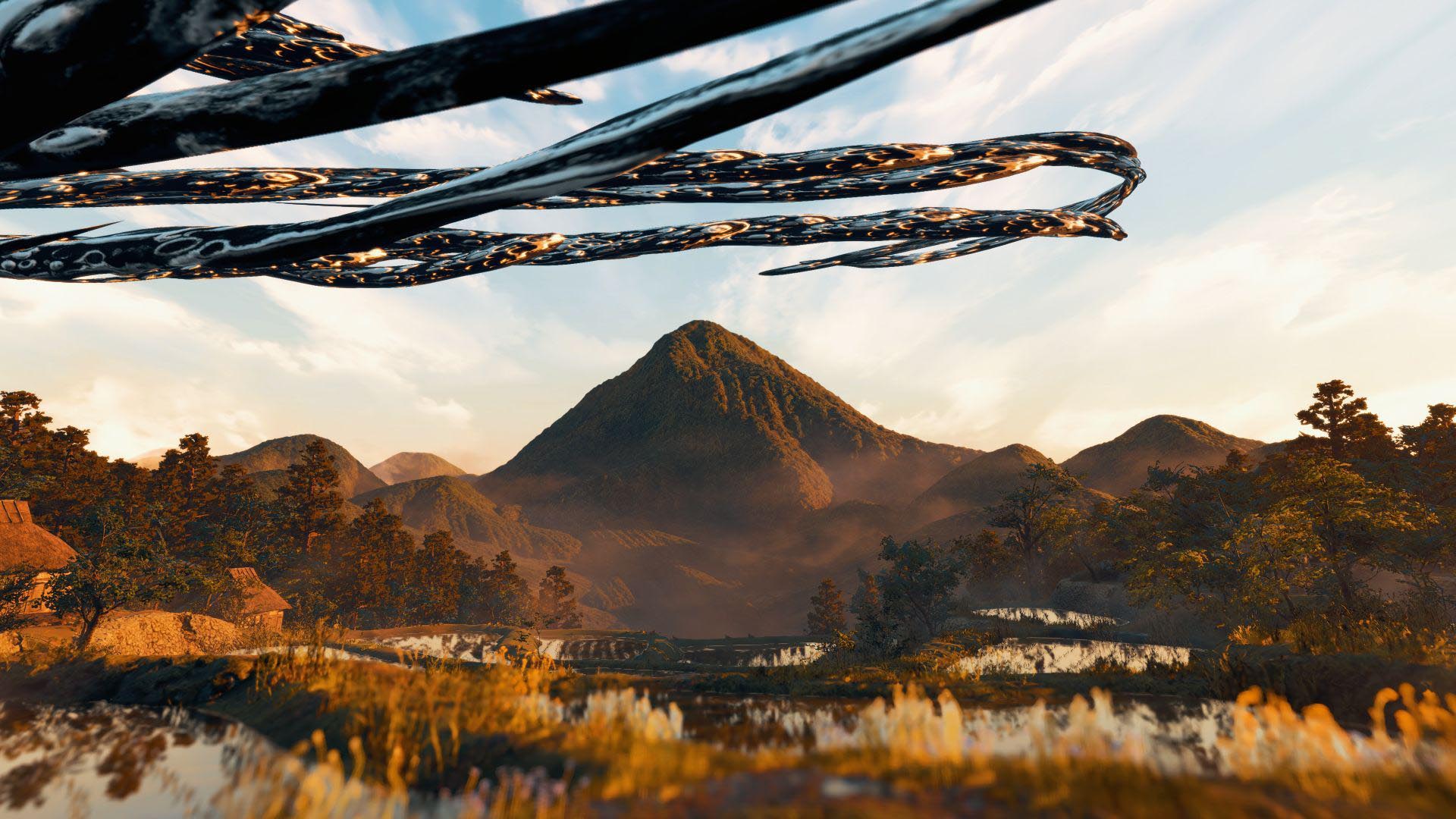
Embracing the company slogan, “From Osaka to the World,” Capcom will release Kunitsu-Gami: Path of the Goddess tomorrow, July 19. An original action-strategy hybrid that weaves its gameplay into a unique Japanese-inspired world, players take on the role of Soh, the guardian of the Maiden Yoshiro, and must protect and fight for her, making use of the two phases; day and night, to prepare for and fend off the looming threat of the Seethe respectively.
The game takes inspiration from several Japanese traditions, helping inform everything from the aesthetic to how Soh fights in a “sword-dancing” style – and the influence is far more than skin-deep. With the release of Kunitsu-Gami: Path of the Goddess coming on Friday, July 19, Capcom has partnered with practitioners of one of Japan’s oldest traditional performing arts, Ningyo Joruri Bunraku (known more simply as Bunraku) – a comprehensive art form that integrates Tayu (narration), Shamisen (a three-stringed Japanese musical instrument), and puppeteering. A special video titled “Ceremony of the Deity: The Maiden’s Destiny,” featuring living national treasure and master puppeteer Kanjuro Kiritake the Third, portraying the priestess, has been released as a prequel to invite players into the world of Kunitsugami: Path of the Goddess.
Ahead of the release of the video, the Xbox Wire Japan team participated in an interview at the National Bunraku Theatre in Osaka, where the performance was staged and filmed. The interview features Master Kanjuro Kiritake, Kunitsu-Gami director Shuichi Kawata, and Capcom’s Tairoku Nozoe, who scripted for the Bunraku performance. The team talked us through the influence of Bunraku on the game, the unique creation of a Bunraku performance for the game, and more.
First, we’d like to hear more about the background of this collaboration. We understand that the challenge to collaborate began when the Capcom team reached out with the idea, and Master Kanjuro graciously accepted to help out. Could you tell us about the process leading up to this?
Nozoe: If we were to trace things back to its origin, it might be when Kawata, who was developing the concept for Kunitsu-Gami: Path of the Goddess, shared his passion for Bunraku with me. Kawata is a fervent fan of Bunraku, and his enthusiasm led us to attend a performance together. We were both deeply moved by the performance, and it made us realize that such fascinating art form existed out there, convincingly withstanding the test of time. This inspired us to reach out to the National Bunraku Theatre. Kawata’s connection with the world of Bunraku also helped, allowing us to have various discussions and propose the idea for this collab. Kunitsu-Gami: Path of the Goddess was created with a sense of traditional arts and performances in mind, so I am incredibly moved that this collaboration has come to fruition in such a big way.
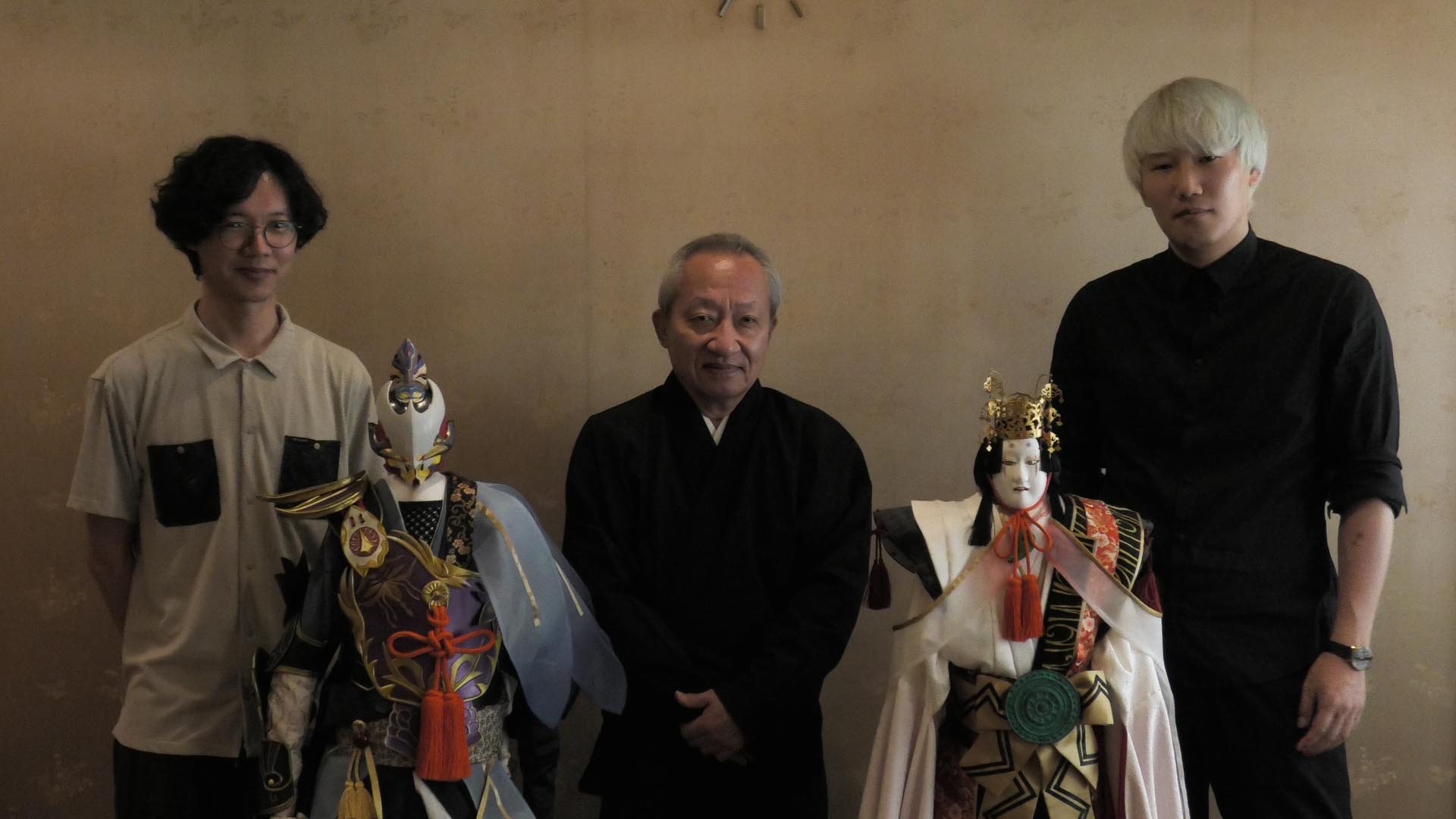
Master Kanjuro, when you first heard about the proposal to work and collaborate with a game through the arts of Bunraku, what were your initial thoughts?
Master Kanjuro: I remember feeling a bit troubled because I couldn’t immediately organize the concept in my mind, and I wasn’t sure how to make the project a reality. However, given my extended experience with various collaborations and my inherent love for collaborations through the art of Bunraku, I offered to help if I could. I believe that by the time of filming, I had managed to clear my mind and focus, resulting in the wonderful video.
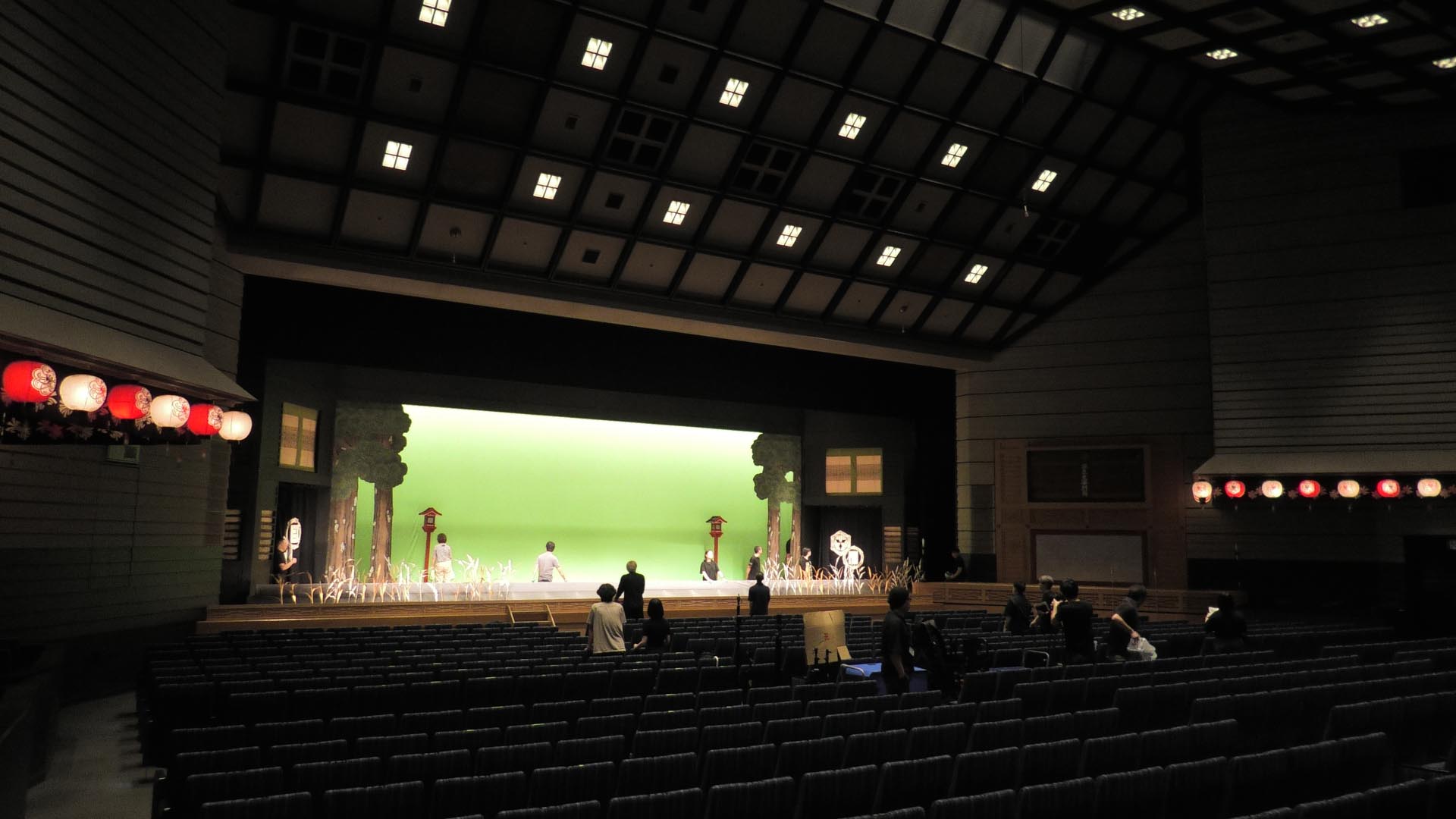
Master Kanjuro, do you personally play video games? Or do any of the people close to you enjoy playing games?
Master Kanjuro: Games are fascinating because they allow you to immerse yourself in the story happening on the screen, and moreover share various narratives that are embedded in Japanese culture with the world. All of my children love games, and I also enjoyed the early, simple video games when I was younger. I remember having to guide my children to play in moderation, as they tended to play a little too much under the past standards. Now, it’s mainly my grandchildren who play games, and they often invite me to join. When I have time, I enjoy playing with them. I still get very absorbed in gaming, so I try to be a bit careful [laughs].
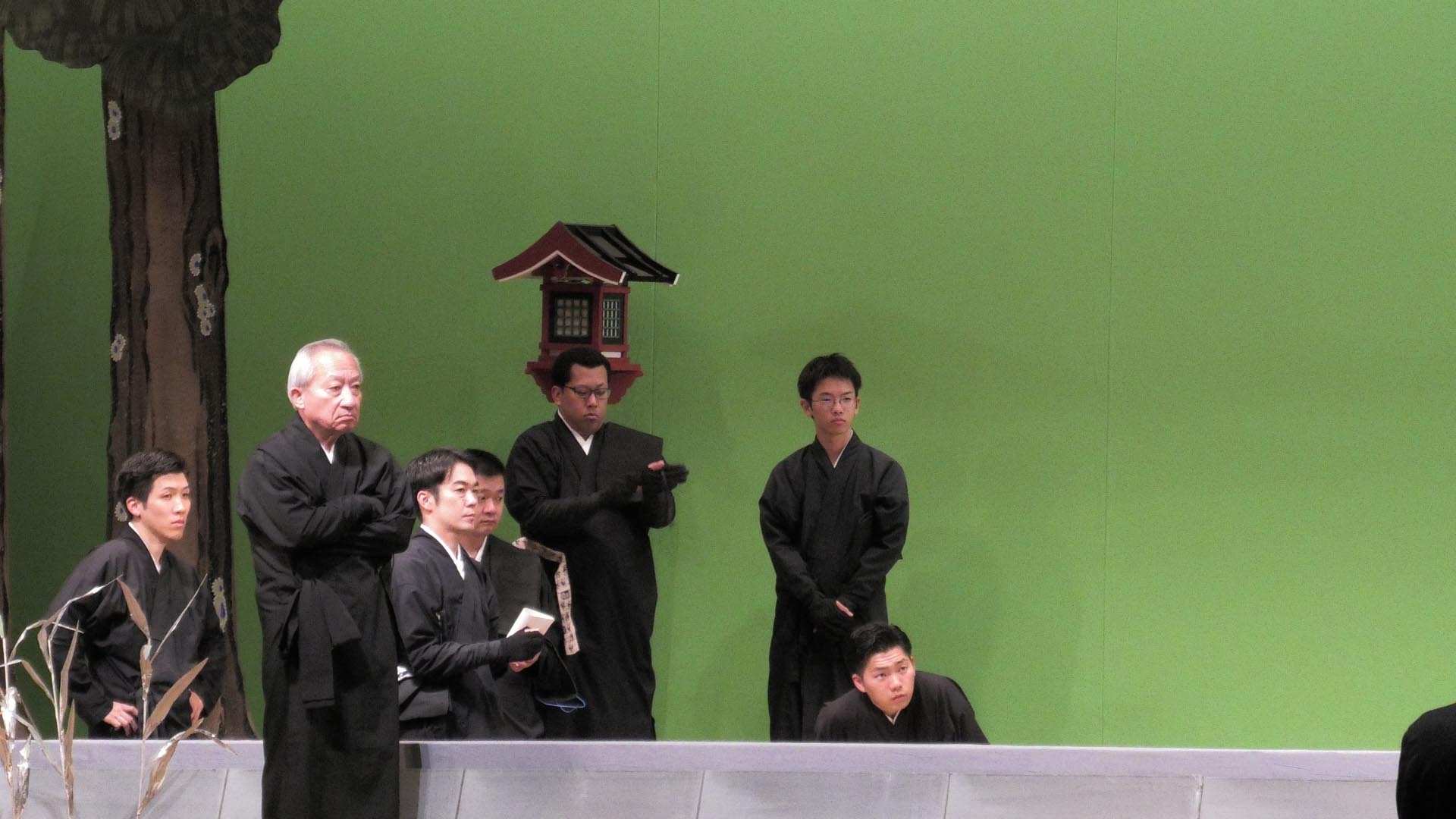
I heard that when discussing the project, you felt a personal connection with Capcom’s catchphrase, “From Osaka to the world”.
Master Kanjuro: Exactly. Bunraku is an art form that was born and raised in Osaka, just like how Capcom has continued to nurture this same land. I felt a strong connection with the idea of sharing and spreading our efforts further, beyond Osaka, to the rest of the world.
As the project progressed and you saw the game footage and concept art for Kunitsu-Gami: Path of the Goddess, you became very enthusiastic and offered various advice on the creation of the puppets. Could you share your impressions when you first saw the game footage, and your thoughts as the project progressed?
Master Kanjuro: First and foremost, I was captivated by the visual beauty and found the character designs very interesting. Having been away from games for a while, besides playing with my grandchildren, I was honestly amazed by the advancements made in modern games. At the same time, it increased the challenge of figuring out how to create these characters as puppets. My expertise lies in performing in “jidai-mono”, which focuses on historical events and people, and not in fiction. So I initially thought this project would involve simply making and perhaps slightly manipulating the puppets, but when I learned that a full story and script were being written, I realized the collab was transforming into a very profound, enjoyable, and expansive project.
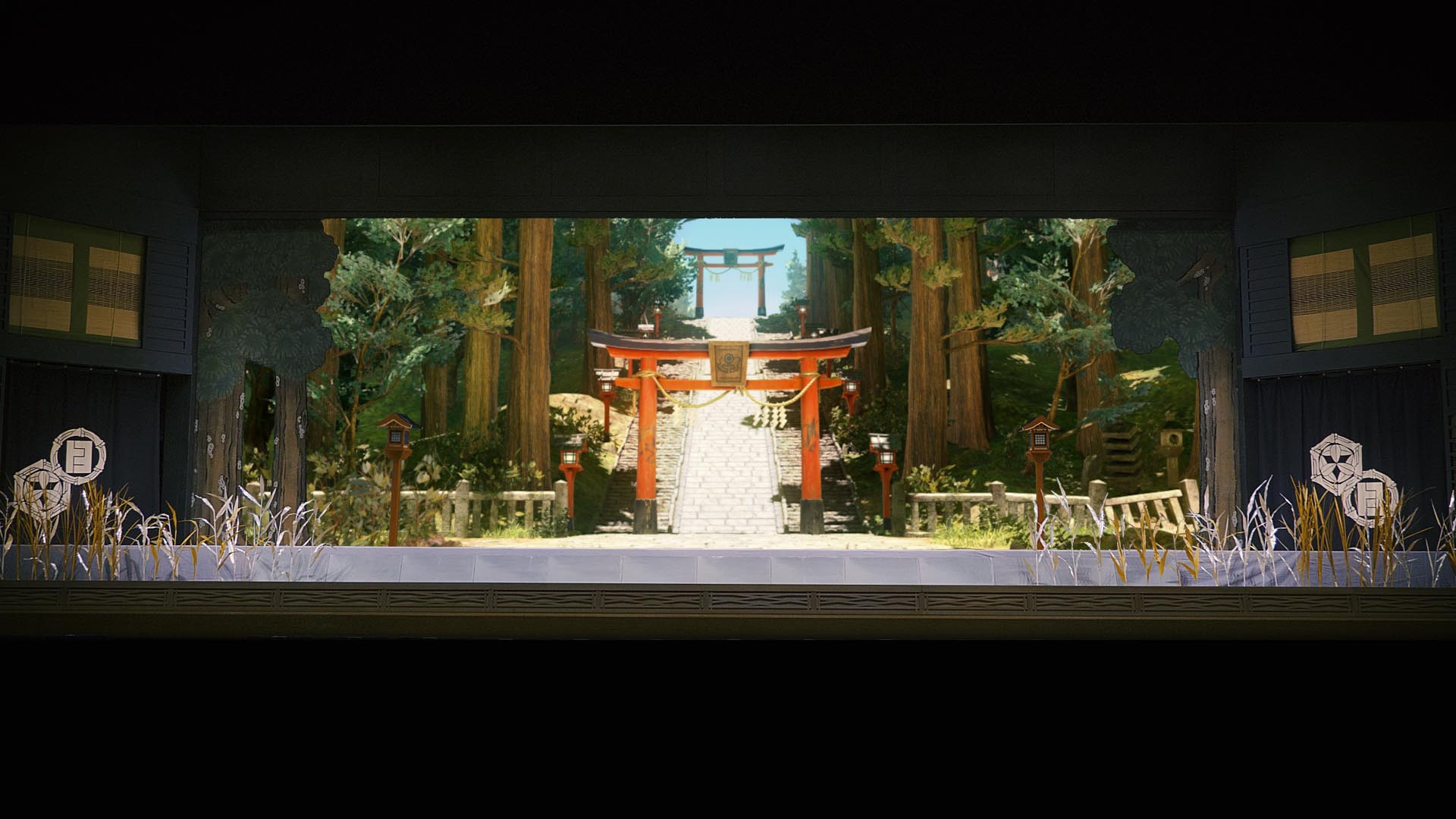
The script was apparently written by none other than Capcom’s Nozoe-san.
Master Kanjuro: At first, I didn’t know who had worked on the script. But after a read-through, I found it to be very profound, packed with just the right ingredients, and felt it was very compelling. What I found particularly interesting about this script was that, unlike many other scripts where it is difficult to pair with a suitable musical accompaniment, I could envision what type of music would be best fit from the first read. Although the final music will always be composed by the shamisen player, I had a strong impression of how the music would feel like, and I believe it turned out to be something truly exceptional.
As a result, I ended up being busy with this project throughout June, a month when I was supposed to be on a break with no performances assigned. However, my original aspiration when I was young was to be a manga artist, and I have always loved illustrating, creating things, drawing, and designing. The feeling of anticipation, seeing the puppets gradually nearing their final forms, made June a truly fulfilling month. Incidentally, the magatama decoration [a ceremonial, comma-shaped object considered sacred] on the Maiden puppet was entirely handcrafted by myself.
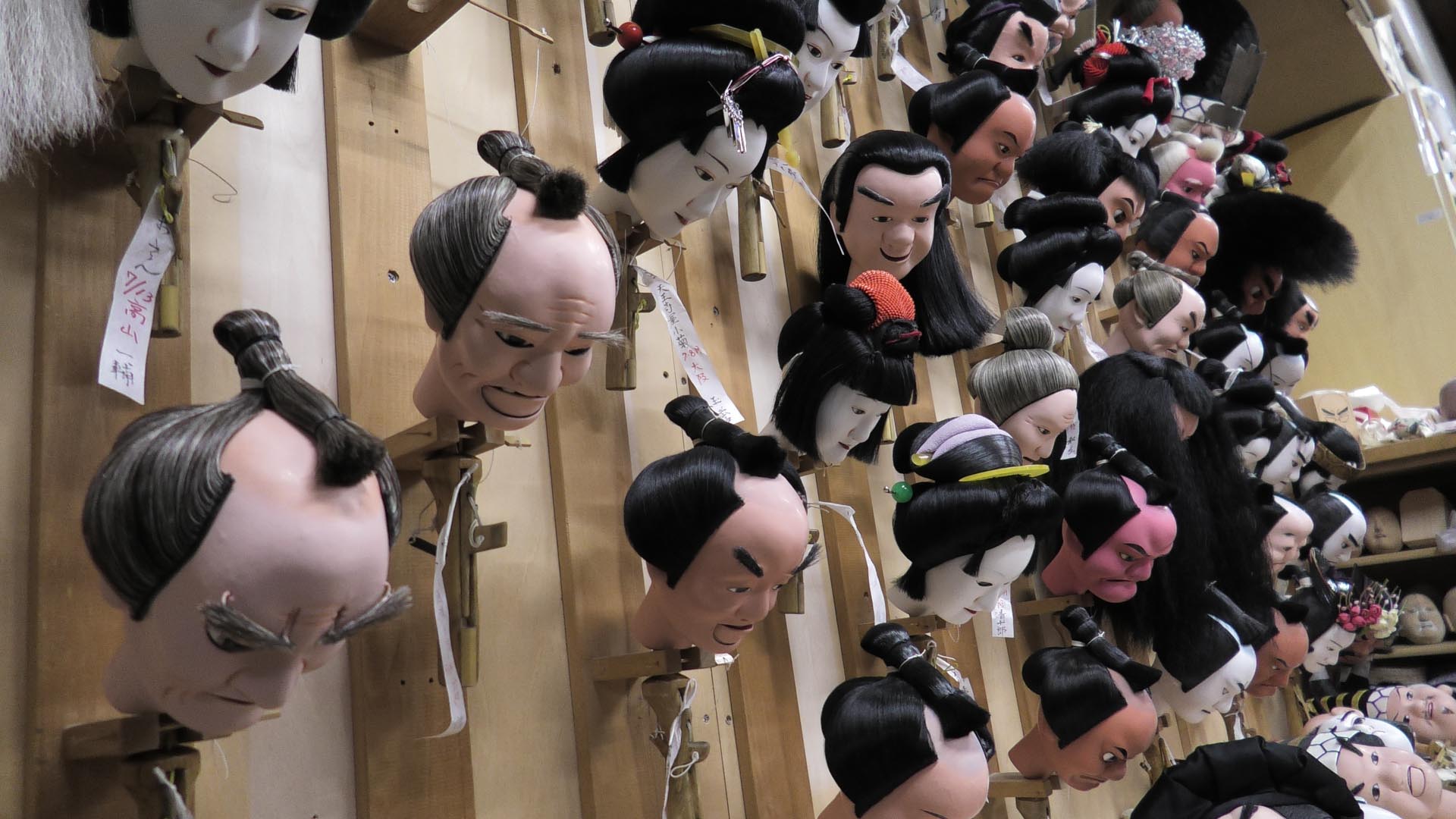
Do you have any comments you would like to make, with the collaboration between Bunraku and Kunitsu-Gami: Path of the Goddess soon coming to a full circle?
Nozoe: Kunitsu-Gami: Path of the Goddess is a game that values tradition while also embracing new challenges. For this collaboration project, the focus was not so much on expressing the essence of the game through the world of Bunraku, but rather on how to align and highlight the charm of Bunraku within the world of the game. Given that, what impressed me the most when Master Kanjuro supervised the script was how skillfully he adjusted everything with a keen sense of balance. He knew exactly when to align with the expressions that Kunitsu-Gami: Path of the Goddess has, and carefully incorporated the elements we felt should retain a Bunraku-esque touch. As a result, I feel the Ningyo Joruri Bunraku that came out of this project maintained a very satisfying balance.
Master Kanjuro: I am very glad that you are happy with the outcome. Would you like to consider a sequel?
Nozoe: Yes, please!
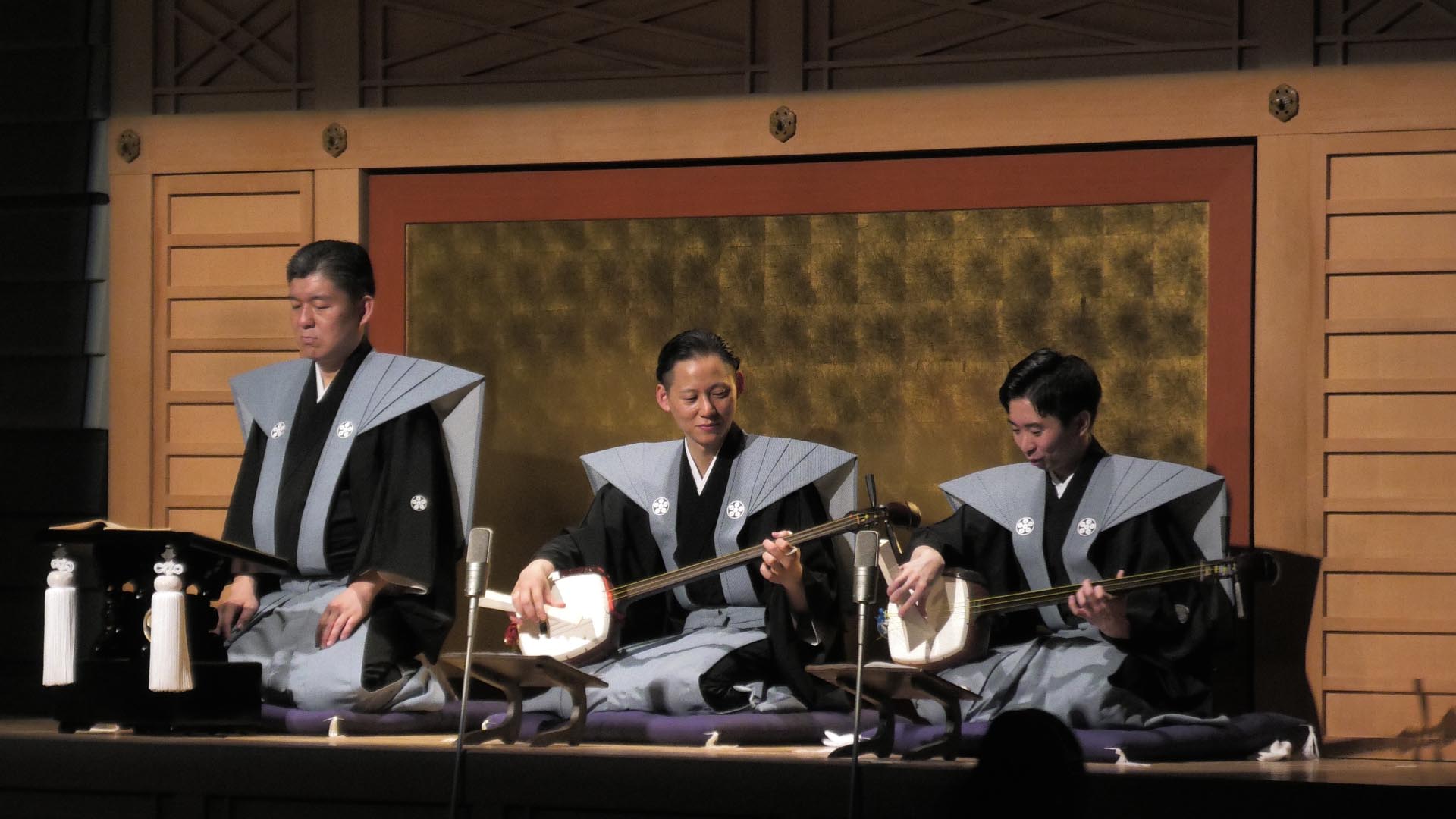
Master Kanjuro: I don’t want to trouble everyone at the theater, but I’d like to try performing this as a full-length play. It would be interesting to turn this into a play and adjust the story to work on the stage. I’m delighted that such new attempts can be made with Ningyo Joruri Bunraku, which originated, rooted, and grew in Osaka. The “3-man manipulation” technique, now considered standard, was devised in 1734, about 290 years ago. It’s both fascinating and gratifying to see that the Ningyo Joruri, which has preserved this technique for so long, is now connected with the latest technology and content in gaming.
Nozoe: During the development of the game, we were always inspired by the direction and movements of Ningyo Joruri Bunraku. Even before discussing the collaboration, Kunitsu-Gami: Path of the Goddess was already heavily infused with elements of Bunraku. Additionally, the method used to create the environmental elements in the game was quite unique, where we first created miniatures and then digitized them. This emphasis on realism, which is very important to Kawata-san, made our efforts within the collaboration align well.
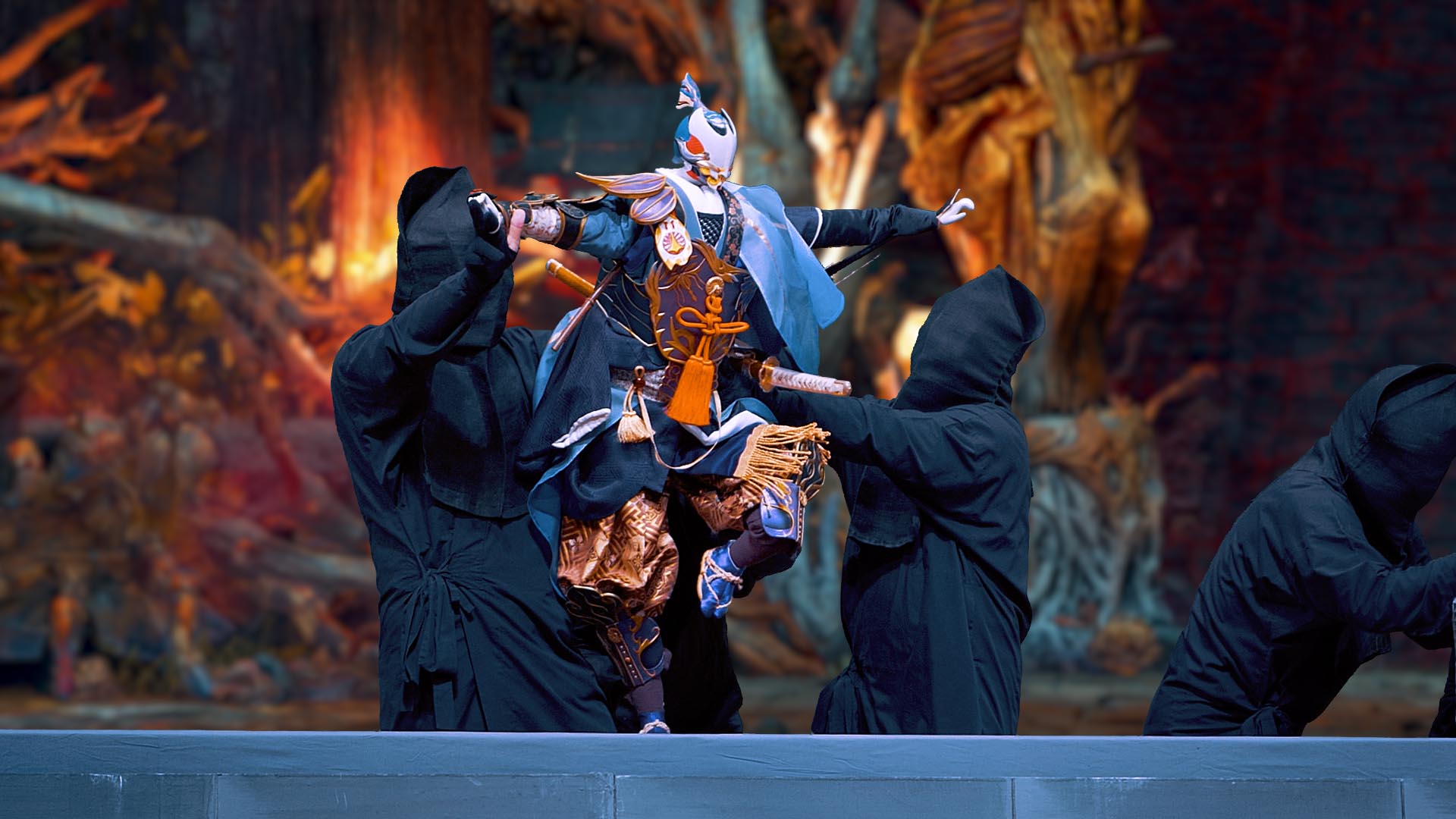
I am aware that some people may read this blogpost before watching the performance, while others might read the article after having already seen it once and then are motivated to watch again. Could you share any tips for those who are experiencing Bunraku for the first time?
Master Kanjuro: As a puppeteer, I’d like you to carefully observe the synchronized movements of the puppets performed by the three puppeteers. The omozukai (head and right hand), hidarizukai (left hand), and ashizukai (legs) are three entirely different individuals working together in synchronicity to animate a single puppet. This technique has been refined over approximately 290 years, and through this, you can experience just how well-crafted the art of Ningyo Joruri Bunraku is. While it may be challenging to grasp everything in one viewing, I believe that if you watch it multiple times, there will be moments when its beauty may resonate with you. Once that happens, you’ll likely begin to enjoy any performance you watch. Some may feel unsure about what is being said or narrated, but don’t worry. The narration is crafted in the most beautiful Japanese language, and over time, you will be able to deepen your understanding with the help of a synopsis at hand. I hope you will pay close attention to these aspects.
Nozoe: Since Kunitsugami: Path of the Goddess is the focal point for this collaborative development, it might be good to first get to know its story. In the original work, there are the main characters: the guardian, Soh and the Maiden, Yoshiro, and their story is something that has been repeated many, many times. The game itself only highlights one of the many. Given this, “Ceremony of the Deity: The Maiden’s Destiny” can be considered a prequel to the main story of Kunitsugami: Path of the Goddess. How does Soh and the Maiden featured in this prequel connect to the main story? That is a mystery you might unveil once you play the game, and then come back to watch the performance again.
Kawata: We have prepared mechanisms that will further your understanding of Kunitsugami: Path of the Goddess when you watch the play after playing the game. Additionally, if you reflect on the ending of the main story while watching the Ningyo Joruri performance, you will find yourself saying, “oh, that’s why”.
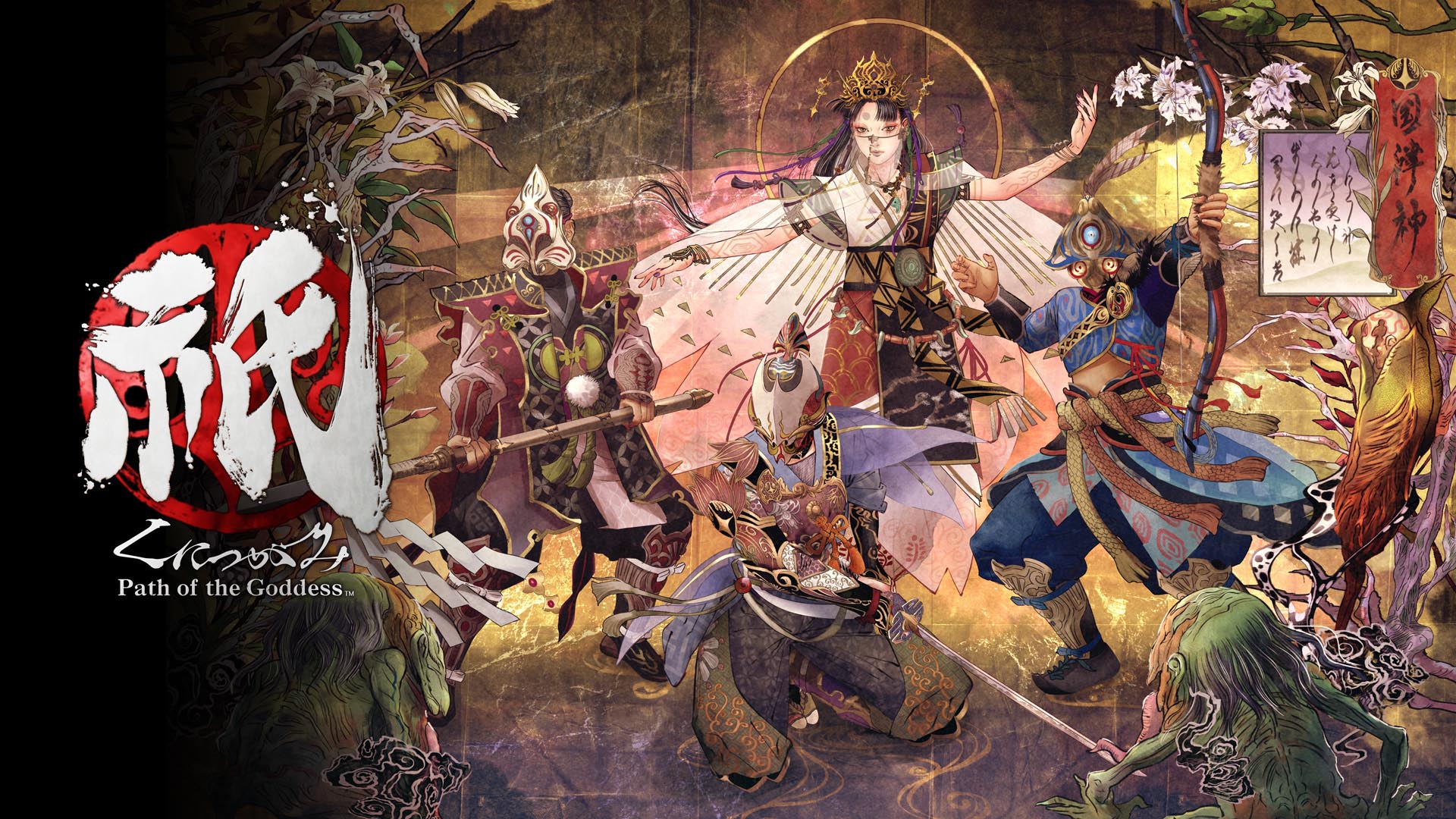
Kunitsu-Gami: Path of the Goddess will be available on July 19 for Xbox Series X|S, Xbox One and Windows PC, and Xbox Game Pass subscribers will be able to play the game from day one. In addition, this title is compatible with Xbox Play Anywhere, allowing cross-play and transfer of saved data between Xbox and Windows 10/11.


